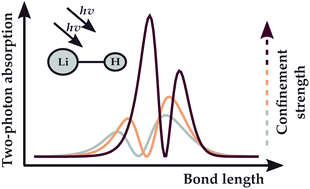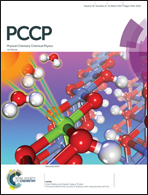Two-photon absorption of the spatially confined LiH molecule
Abstract
In the present contribution we study the influence of spatial restriction on the two-photon dipole transitions between the X1Σ+ and A1Σ+ states of lithium hydride. The bond-length dependence of the two-photon absorption strength is also analyzed for the first time in the literature. The highly accurate multiconfiguration self-consistent field (MCSCF) method and response theory are used to characterize the electronic structure of the studied molecule. In order to render the effect of orbital compression we apply a two-dimensional harmonic oscillator potential, mimicking the topology of cylindrical confining environments (e.g. carbon nanotubes, quantum wires). Among others, the obtained results provide evidence that at large internuclear distances the TPA response of lithium hydride may be significantly enhanced and this effect is much more pronounced upon embedding of the LiH molecule in an external confining potential. To understand the origin of the observed variation in the two-photon absorption response a two-level approximation is employed.



 Please wait while we load your content...
Please wait while we load your content...